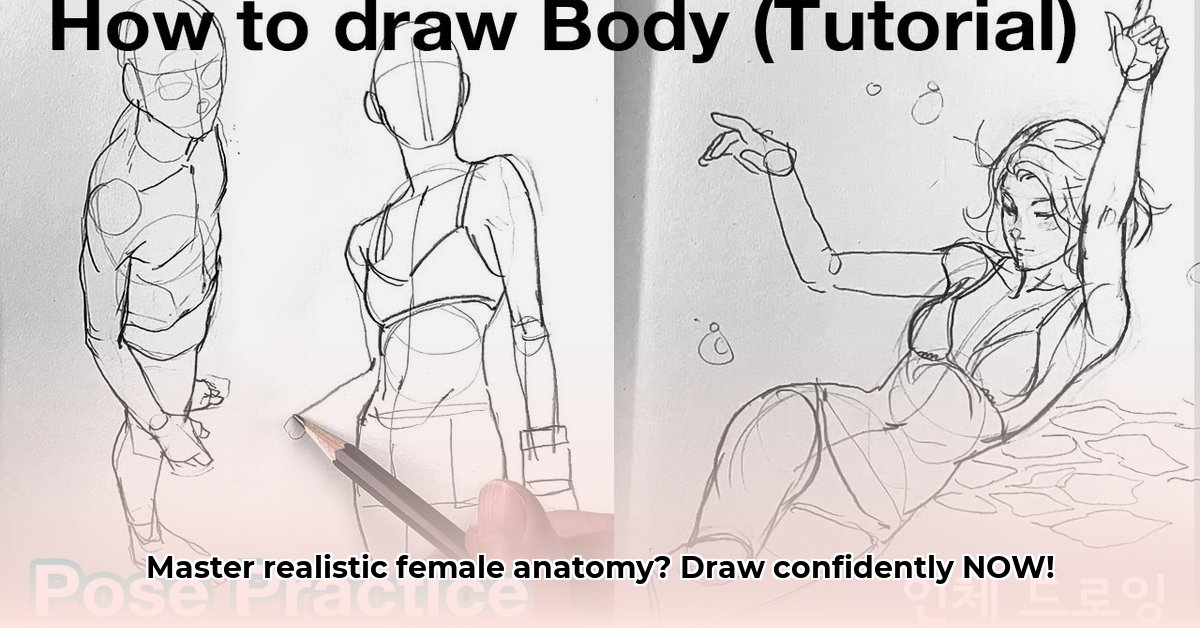
Understanding Basic Proportions: Laying the Foundation
Before diving into the details, let's establish a solid understanding of basic proportions. While individual variations exist, a helpful guideline is to consider the average female figure as approximately seven to eight head heights tall. This isn't a rigid rule, but a valuable starting point for establishing believable proportions. Remember, mastering realistic drawing is a journey, not a race. Consistent practice will refine your understanding of these proportions. Do you find yourself struggling with accurate head-to-body ratios? Many beginners do! For further reference, check out these helpful pose references.
Constructing the Figure with Basic Shapes: Building Blocks
Now, let's simplify the complex human form. Think of the body as a collection of interconnected basic shapes: ovals for the torso and ribcage, cylinders for the limbs, and a slightly flattened sphere for the head. This approach allows you to map out the overall form and proportions before adding intricate details. This "skeleton" of shapes provides a strong foundation for your drawing, ensuring accurate proportions before adding finer details. Think of it as building a house – you wouldn't start painting before you lay the foundation!
Adding Anatomical Detail: Enhancing Realism
This stage involves bringing the figure to life through anatomical accuracy. Focus on key landmarks that greatly influence the overall shape of the female form. The ribcage, pelvis, and shoulder girdle are crucial! Understanding their placement and interaction creates realistic curves and flow. While extensive anatomical knowledge is helpful, you only need to focus on details directly impacting the visual appearance. It's about subtle differences in bone structure and muscle mass that create individuality, not memorizing every muscle name. Did you know that subtle changes in the pelvic structure can significantly alter the look of the hips?
Rendering the Form: Mastering Light and Shadow
Here, your drawing transforms from a simple outline to a three-dimensional figure. Light and shadow are fundamental to achieving realism. Observe how light interacts with the body's curves and bulges; this interaction helps to create depth and volume, making muscles and skin look more lifelike. Experiment with different light sources – a bright overhead light will cast shadows dramatically different from a soft side light. This control over light and shadow allows you to convey mood and a strong sense of form. Have you noticed how professional artists use light and shadow to sculpt their drawings?
Drawing Different Poses and Body Types: Expanding Your Skillset
With a solid grasp of fundamental structure and rendering, it's time to explore dynamic poses. Remember, the underlying anatomical structure adapts to different positions and body types. Observe closely how bone structure and muscles shift and interact, altering the overall appearance. Use references to study these changes, but also try visualizing how underlying shapes adapt to different poses. The initial structures you learned are still present, just transformed. Did you know that understanding the movement of the spine significantly affects how you draw a figure in a twisted pose?
Practice Exercises and Examples: Refining Your Technique
Consistent practice is key to mastering realistic figure drawing. Begin with straightforward poses to reinforce your understanding of basic proportions and gradually progress to more complex ones. Don't be discouraged by imperfect initial attempts—learning from mistakes is crucial. This iterative process strengthens your skills and builds confidence. Using reference images is excellent, but don't just copy! Instead, analyze proportions, light, shadow, and body movement. Focus on applying learned concepts and understanding the underlying anatomy. Regular practice is the most effective path to improvement. What's the most effective way to improve your drawing skills?
This guide provides a structured approach to drawing realistic female figures. With dedicated effort and a passion for learning, you'll create beautiful and expressive artwork. Remember: embrace the process, celebrate your progress, and don't be afraid to experiment!